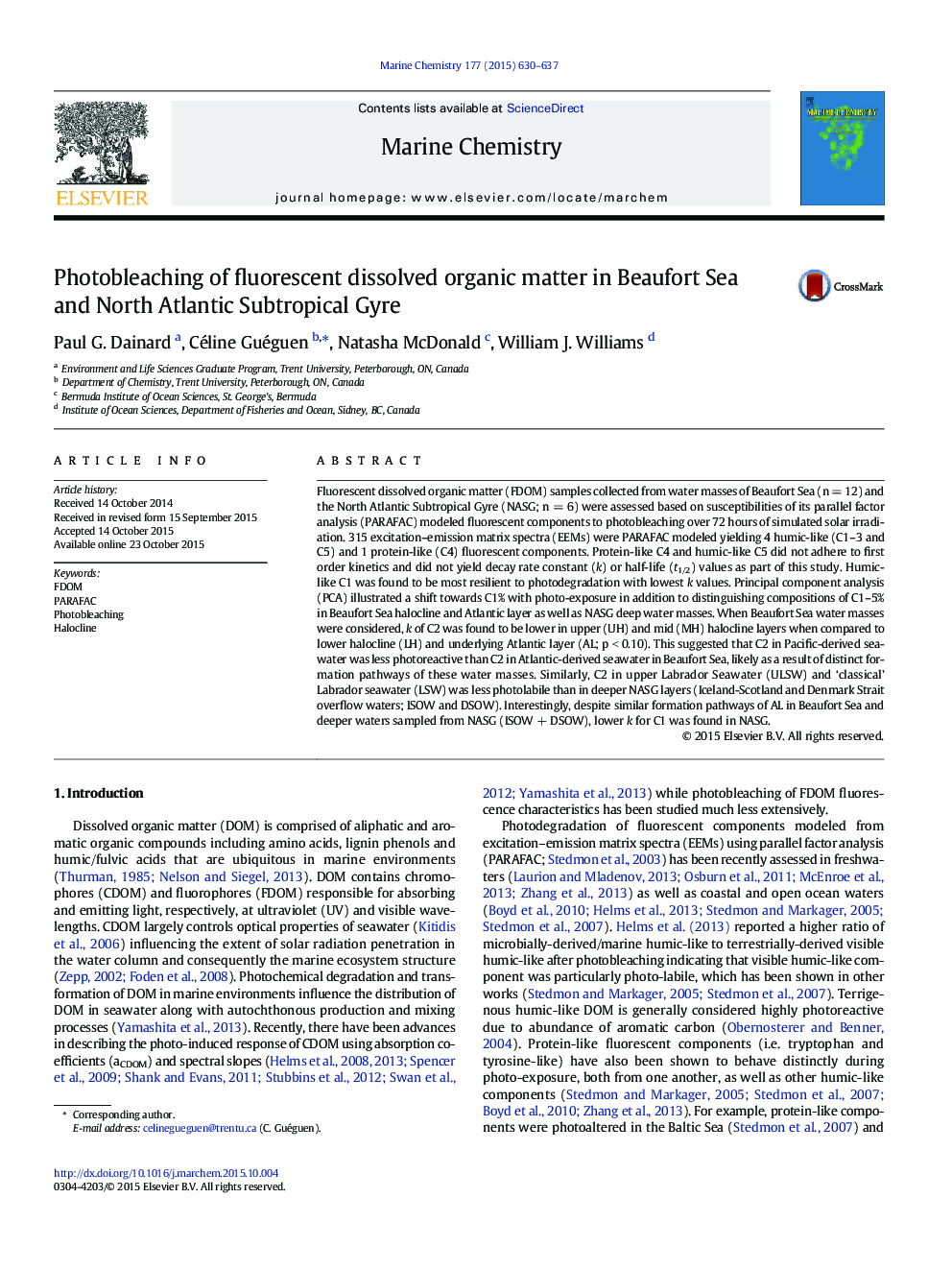| Article ID | Journal | Published Year | Pages | File Type |
|---|---|---|---|---|
| 1260962 | Marine Chemistry | 2015 | 8 Pages |
Abstract
Fluorescent dissolved organic matter (FDOM) samples collected from water masses of Beaufort Sea (n = 12) and the North Atlantic Subtropical Gyre (NASG; n = 6) were assessed based on susceptibilities of its parallel factor analysis (PARAFAC) modeled fluorescent components to photobleaching over 72 hours of simulated solar irradiation. 315 excitation-emission matrix spectra (EEMs) were PARAFAC modeled yielding 4 humic-like (C1-3 and C5) and 1 protein-like (C4) fluorescent components. Protein-like C4 and humic-like C5 did not adhere to first order kinetics and did not yield decay rate constant (k) or half-life (t1/2) values as part of this study. Humic-like C1 was found to be most resilient to photodegradation with lowest k values. Principal component analysis (PCA) illustrated a shift towards C1% with photo-exposure in addition to distinguishing compositions of C1-5% in Beaufort Sea halocline and Atlantic layer as well as NASG deep water masses. When Beaufort Sea water masses were considered, k of C2 was found to be lower in upper (UH) and mid (MH) halocline layers when compared to lower halocline (LH) and underlying Atlantic layer (AL; p < 0.10). This suggested that C2 in Pacific-derived seawater was less photoreactive than C2 in Atlantic-derived seawater in Beaufort Sea, likely as a result of distinct formation pathways of these water masses. Similarly, C2 in upper Labrador Seawater (ULSW) and 'classical' Labrador seawater (LSW) was less photolabile than in deeper NASG layers (Iceland-Scotland and Denmark Strait overflow waters; ISOW and DSOW). Interestingly, despite similar formation pathways of AL in Beaufort Sea and deeper waters sampled from NASG (ISOW + DSOW), lower k for C1 was found in NASG.
Keywords
Related Topics
Physical Sciences and Engineering
Chemistry
Chemistry (General)
Authors
Paul G. Dainard, Céline Guéguen, Natasha McDonald, William J. Williams,
